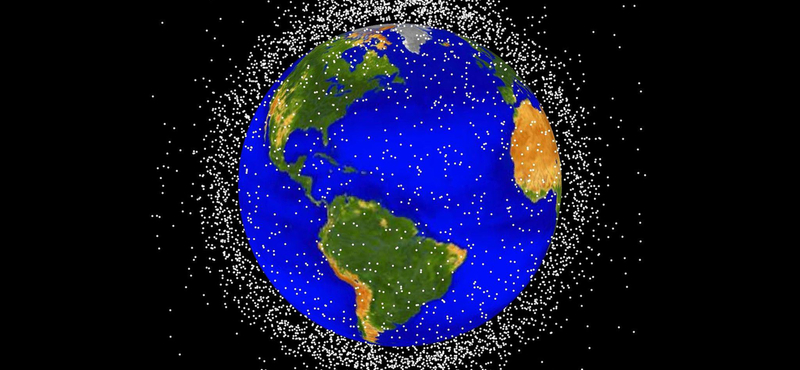[{“available”:true,”c_guid”:”097808ee-cad8-44e2-9e11-0cc8493941ff”,”c_author”:”hvg.hu”,”category”:”gazdasag.ingatlan”,”description”:”A csok plusznál, a korábbi lakástámogatásokhoz hasonlóan számos feltételt vár el az állam. Ha ezeket megsértjük, büntetéssel növelten kell visszafizetnünk a kedvezményeket. A korábbi csok támogatáshoz képest a potenciális büntetés nagysága növekedett.”,”shortLead”:”A csok plusznál, a korábbi lakástámogatásokhoz hasonlóan számos feltételt vár el az állam. Ha ezeket megsértjük…”,”id”:”20240328_nem-mindenki-tudja-hogy-evtizedekre-a-lakashoz-kothet-a-csok-plusz-hitel-allami-tamogatas-jelzalog-buntetes”,”image”:”https://img.hvg.hu/Img/ffdb5e3a-e632-4abc-b367-3d9b3bb5573b/097808ee-cad8-44e2-9e11-0cc8493941ff.jpg”,”index”:0,”item”:”3495b772-64ff-4a39-9e9f-f713bc61c851″,”keywords”:null,”link”:”/ingatlan/20240328_nem-mindenki-tudja-hogy-evtizedekre-a-lakashoz-kothet-a-csok-plusz-hitel-allami-tamogatas-jelzalog-buntetes”,”timestamp”:”2024. március. 28. 19:29″,”title”:”Jó tudni, hogy évtizedekre a lakáshoz köthet a csok plusz”,”trackingCode”:”RELATED”,”c_isbrandchannel”:false,”c_isbrandcontent”:false,”c_isbrandstory”:false,”c_isbrandcontentorbrandstory”:false,”c_isbranded”:false,”c_ishvg360article”:false,”c_partnername”:null,”c_partnerlogo”:”00000000-0000-0000-0000-000000000000″,”c_partnertag”:null},{“available”:true,”c_guid”:”de0615f0-28f3-4104-8fd2-7434e7b8b23d”,”c_author”:”hvg.hu”,”category”:”elet”,”description”:”A veszélyeztetett faj egyedszáma az élőhely elvesztése, a hajók hajócsavarjai okozta sérülések és a környezetszennyezés miatt 10 ezer egyed alá csökkent.”,”shortLead”:”A veszélyeztetett faj egyedszáma az élőhely elvesztése, a hajók hajócsavarjai okozta sérülések és a környezetszennyezés…”,”id”:”20240328_egy-parizsi-allatkertben-talalt-uj-otthonra-egy-fiatal-lamantin-parc-zoologique-de-paris-szaporitas-kornyezetszennyezes-veszelyeztetett-faj”,”image”:”https://img.hvg.hu/Img/ffdb5e3a-e632-4abc-b367-3d9b3bb5573b/de0615f0-28f3-4104-8fd2-7434e7b8b23d.jpg”,”index”:0,”item”:”4b5f49d0-bbae-49a5-ad31-ecfdb6b0d706″,”keywords”:null,”link”:”/elet/20240328_egy-parizsi-allatkertben-talalt-uj-otthonra-egy-fiatal-lamantin-parc-zoologique-de-paris-szaporitas-kornyezetszennyezes-veszelyeztetett-faj”,”timestamp”:”2024. március. 28. 21:03″,”title”:”Egy párizsi állatkertben talált új otthonra egy fiatal lamantin”,”trackingCode”:”RELATED”,”c_isbrandchannel”:false,”c_isbrandcontent”:false,”c_isbrandstory”:false,”c_isbrandcontentorbrandstory”:false,”c_isbranded”:false,”c_ishvg360article”:false,”c_partnername”:null,”c_partnerlogo”:”00000000-0000-0000-0000-000000000000″,”c_partnertag”:null},{“available”:true,”c_guid”:”0ad0667f-5ef1-4f99-8880-55363a705747″,”c_author”:”hvg.hu”,”category”:”itthon”,”description”:”A fideszes publicista kedden arról írt, hogy egy évtizede tudják a pártban, hogy Magyar Péter hogyan bánt Varga Judit egykori igazságügyi miniszterrel, amíg együtt voltak. Magyar Péter erre közölte, hogy Bayer alig öt éve ismeri Vargát.”,”shortLead”:”A fideszes publicista kedden arról írt, hogy egy évtizede tudják a pártban, hogy Magyar Péter hogyan bánt Varga Judit…”,”id”:”20240327_magyar-visszaszol-bayernek-akkor-is-hazudsz-ha-kerdezel”,”image”:”https://img.hvg.hu/Img/ffdb5e3a-e632-4abc-b367-3d9b3bb5573b/0ad0667f-5ef1-4f99-8880-55363a705747.jpg”,”index”:0,”item”:”aa4a6128-54e6-44b3-9cb1-1dc1a20abdb7″,”keywords”:null,”link”:”/itthon/20240327_magyar-visszaszol-bayernek-akkor-is-hazudsz-ha-kerdezel”,”timestamp”:”2024. március. 27. 16:58″,”title”:”Magyar visszaszólt Bayernek: Akkor is hazudsz, ha kérdezel”,”trackingCode”:”RELATED”,”c_isbrandchannel”:false,”c_isbrandcontent”:false,”c_isbrandstory”:false,”c_isbrandcontentorbrandstory”:false,”c_isbranded”:false,”c_ishvg360article”:false,”c_partnername”:null,”c_partnerlogo”:”00000000-0000-0000-0000-000000000000″,”c_partnertag”:null},{“available”:true,”c_guid”:”ab5f95be-42cf-4470-bb2a-e725602dc6c6″,”c_author”:”Vándor Éva”,”category”:”elet”,”description”:”A „kapcsolat mélységébe” kért bepillantást, de nem úgy tűnt, hogy fel volt készülve arra, hogy ezt a mélységet kezelje.”,”shortLead”:”A „kapcsolat mélységébe” kért bepillantást, de nem úgy tűnt, hogy fel volt készülve arra, hogy ezt a mélységet kezelje.”,”id”:”20240328_hajdu-peter-varga-judit-bantalmazoi-kapcsolat-interju-kerdesek”,”image”:”https://img.hvg.hu/Img/ffdb5e3a-e632-4abc-b367-3d9b3bb5573b/ab5f95be-42cf-4470-bb2a-e725602dc6c6.jpg”,”index”:0,”item”:”2c54a54b-289a-491a-9ff1-bef167c16bfc”,”keywords”:null,”link”:”/elet/20240328_hajdu-peter-varga-judit-bantalmazoi-kapcsolat-interju-kerdesek”,”timestamp”:”2024. március. 28. 13:45″,”title”:”Lehet, hogy Hajdú Péter „megbízható káder” egy Varga Judit-interjúhoz, de a bántalmazásról nem sokat tud”,”trackingCode”:”RELATED”,”c_isbrandchannel”:false,”c_isbrandcontent”:false,”c_isbrandstory”:false,”c_isbrandcontentorbrandstory”:false,”c_isbranded”:false,”c_ishvg360article”:false,”c_partnername”:null,”c_partnerlogo”:”00000000-0000-0000-0000-000000000000″,”c_partnertag”:null},{“available”:true,”c_guid”:”91c4286c-e15e-4ad9-ad7c-90320f7e8072″,”c_author”:”hvg.hu”,”category”:”gazdasag”,”description”:”A nettó átlagkereset kedvezményekkel 416 600 forint volt, a bruttó mediánkereset 493 700 forint, a nettó mediánkereset pedig a kedvezmények figyelembevételével 341 700 forintot tett ki.”,”shortLead”:”A nettó átlagkereset kedvezményekkel 416 600 forint volt, a bruttó mediánkereset 493 700 forint, a nettó mediánkereset…”,”id”:”20240328_atlagfizetes-2024-januar-ksh”,”image”:”https://img.hvg.hu/Img/ffdb5e3a-e632-4abc-b367-3d9b3bb5573b/91c4286c-e15e-4ad9-ad7c-90320f7e8072.jpg”,”index”:0,”item”:”237e80db-fedd-4e6e-b380-f50b47c28ed6″,”keywords”:null,”link”:”/gazdasag/20240328_atlagfizetes-2024-januar-ksh”,”timestamp”:”2024. március. 28. 09:44″,”title”:”KSH: az átlag magyar nettó 341 ezret keres havonta”,”trackingCode”:”RELATED”,”c_isbrandchannel”:false,”c_isbrandcontent”:false,”c_isbrandstory”:false,”c_isbrandcontentorbrandstory”:false,”c_isbranded”:false,”c_ishvg360article”:false,”c_partnername”:null,”c_partnerlogo”:”00000000-0000-0000-0000-000000000000″,”c_partnertag”:null},{“available”:true,”c_guid”:”8cf0dfb5-83f8-42e7-be97-ddde11d897a0″,”c_author”:”hvg.hu”,”category”:”cegauto”,”description”:”A tisztán elektromos hajtásláncú Ararkis Sandstorm legfőbb hívószava az extrém gyorsulási élmény.”,”shortLead”:”A tisztán elektromos hajtásláncú Ararkis Sandstorm legfőbb hívószava az extrém gyorsulási élmény.”,”id”:”20240328_15-masodperc-alatt-0-rol-100-ra-ezt-tudja-a-legujabb-hiperauto-ararkis-sandstorm”,”image”:”https://img.hvg.hu/Img/ffdb5e3a-e632-4abc-b367-3d9b3bb5573b/8cf0dfb5-83f8-42e7-be97-ddde11d897a0.jpg”,”index”:0,”item”:”126bdaae-1af7-4d69-bada-63fd516aefa2″,”keywords”:null,”link”:”/cegauto/20240328_15-masodperc-alatt-0-rol-100-ra-ezt-tudja-a-legujabb-hiperauto-ararkis-sandstorm”,”timestamp”:”2024. március. 28. 06:41″,”title”:”1,5 másodperc alatt 0-ról 100-ra, ezt tudja a legújabb hiperautó”,”trackingCode”:”RELATED”,”c_isbrandchannel”:false,”c_isbrandcontent”:false,”c_isbrandstory”:false,”c_isbrandcontentorbrandstory”:false,”c_isbranded”:false,”c_ishvg360article”:false,”c_partnername”:null,”c_partnerlogo”:”00000000-0000-0000-0000-000000000000″,”c_partnertag”:null},{“available”:true,”c_guid”:”e8548cc6-aac0-458a-aac6-b4bb0ed394ee”,”c_author”:”hvg.hu”,”category”:”360″,”description”:”Kormánypárti és ellenzéki magyar képviselők gyakran együtt szavaznak az EP-ben – derül ki a testület magyar tagjai ötéves munkájának elemzéséből. Ahogy az is, hogy a Fidesz egyik legkevésbé aktív képviselője lesz a párt listavezetője.”,”shortLead”:”Kormánypárti és ellenzéki magyar képviselők gyakran együtt szavaznak az EP-ben – derül ki a testület magyar tagjai…”,”id”:”20240329_magyar_ep-kepviselok_5_ev_merlegen-fidesz-ellenzek”,”image”:”https://img.hvg.hu/Img/ffdb5e3a-e632-4abc-b367-3d9b3bb5573b/e8548cc6-aac0-458a-aac6-b4bb0ed394ee.jpg”,”index”:0,”item”:”95ecfa4a-2c10-4773-8b51-4c57370b1e73″,”keywords”:null,”link”:”/360/20240329_magyar_ep-kepviselok_5_ev_merlegen-fidesz-ellenzek”,”timestamp”:”2024. március. 29. 08:15″,”title”:”Brüsszelben nem olyan harciasak a fideszesek, mint ahogy azt a kormánypropaganda alapján várni lehetne”,”trackingCode”:”RELATED”,”c_isbrandchannel”:false,”c_isbrandcontent”:false,”c_isbrandstory”:false,”c_isbrandcontentorbrandstory”:false,”c_isbranded”:false,”c_ishvg360article”:true,”c_partnername”:null,”c_partnerlogo”:”00000000-0000-0000-0000-000000000000″,”c_partnertag”:null},{“available”:true,”c_guid”:”9eaccd22-a2d3-490c-b189-f15c89299888″,”c_author”:”hvg.hu”,”category”:”elet”,”description”:”Olyan fájdalmai voltak, hogy az utolsó kormányinfón már beinjekciózva kellett válaszolnia a kérdésekre.”,”shortLead”:”Olyan fájdalmai voltak, hogy az utolsó kormányinfón már beinjekciózva kellett válaszolnia a kérdésekre.”,”id”:”20240328_gerincmutet-gulyas-mutet”,”image”:”https://img.hvg.hu/Img/ffdb5e3a-e632-4abc-b367-3d9b3bb5573b/9eaccd22-a2d3-490c-b189-f15c89299888.jpg”,”index”:0,”item”:”f256e5cf-bb24-42a6-a911-79780d4dc83b”,”keywords”:null,”link”:”/elet/20240328_gerincmutet-gulyas-mutet”,”timestamp”:”2024. március. 28. 14:55″,”title”:”Gerincműtéten esett át Gulyás Gergely, újra kellett tanulnia járni”,”trackingCode”:”RELATED”,”c_isbrandchannel”:false,”c_isbrandcontent”:false,”c_isbrandstory”:false,”c_isbrandcontentorbrandstory”:false,”c_isbranded”:false,”c_ishvg360article”:false,”c_partnername”:null,”c_partnerlogo”:”00000000-0000-0000-0000-000000000000″,”c_partnertag”:null}]

We recommend it from the first page


The government sells the Cancer District area to an Arab investor. As much as possible, it will not be necessary to conduct public procurement procedures, and the project will receive an outstanding classification from the point of view of the national economy, which will exempt it from various rules. The investor will be able to sell the developments with a 5 percent VAT.







